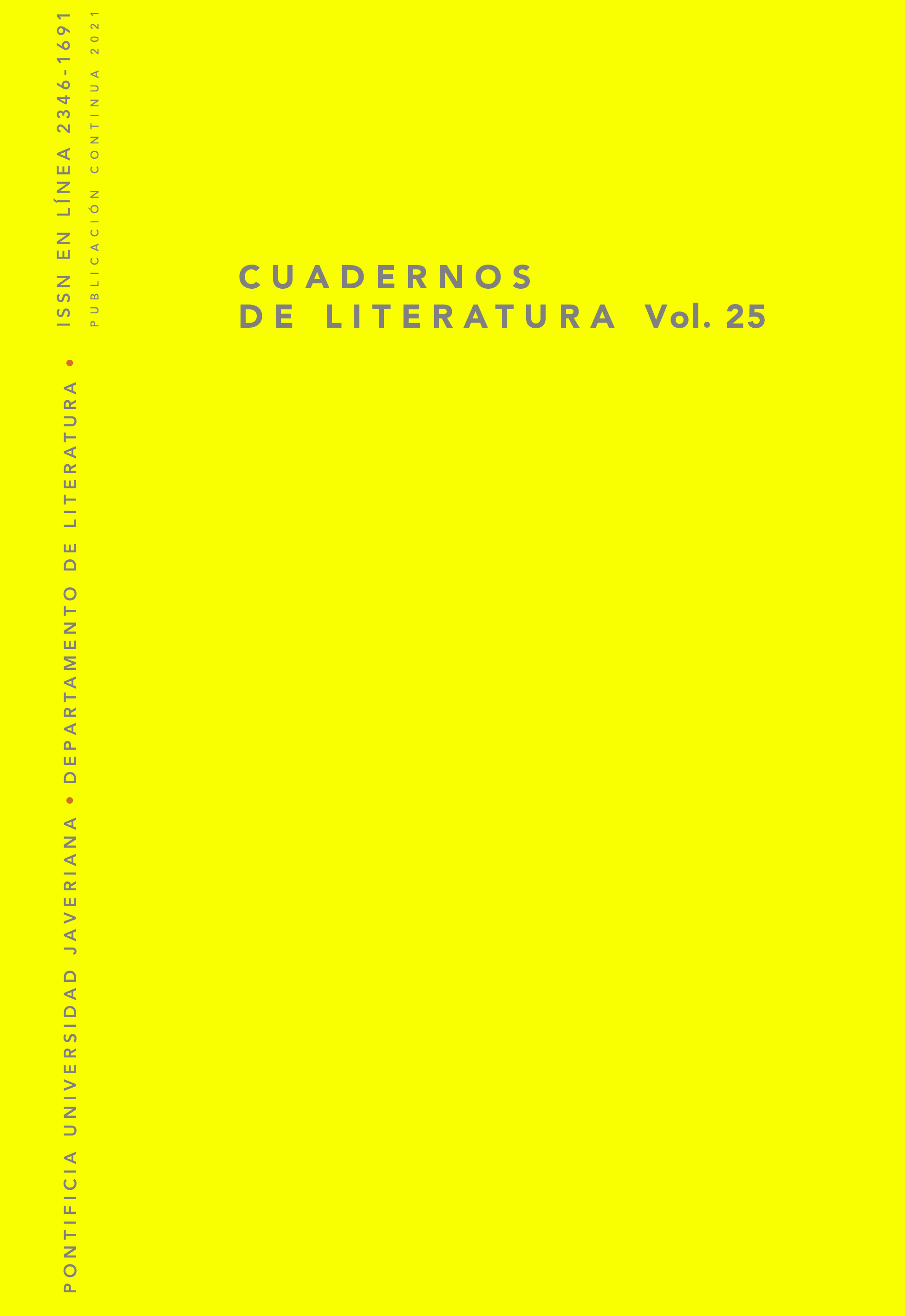Abstract
The cause of Bárbara de Echegaray exemplifies the bond between the female body, sexuality and the accusation of having intimate relationships with the devil. Although the process took place at the end of the 18th century, when the new philosophical currents of Enlightenment were already entering the Colony, the text reflects little more than the version of the Catholic worldview already standardized in the previous century and a half. In this essay, we analyze the clash between female self-expression and the precepts that were preached in sermons an that were also taught in the confessional. In these discourses the symbolism of the devil was considered antagonistic to any spiritual process. Focusing on the figure of Bárbara de Echegaray, with reference to other colonial castes in the New Spain, we examine both, the sexual gender nexus as well as socio-religious norms, in order to reveal how free will is articulated when confronted with hegemonic ecclesiastical ideology.
Alberro, Solange. “Herejes, brujas y beatas: mujeres ante el tribunal del Santo Oficio de la Inquisición en la Nueva España”. Presencia y transparencias: la mujer en la historia de México, editado por Carmen Ramos Escandón et al., Colegio de México, 1987, pp. 79-94.
---. Inquisición y sociedad en México 1571-1700, traducido por Solange Alberro, Fondo de Cultura Económica, 1988.
---. “La sexualidad manipulada en Nueva España: modalidades de recuperación y de adaptación frente a los tribunales eclesiásticos”. Familia y sexualidad en Nueva España, editado por Gabriela Becerra E., Fondo de Cultura Económica, 1982, pp. 238-257.
Bracamonte Allaín, Jorge. “Los nefandos placeres de la carne. La iglesia y el estado frente a la sodomía en la Nueva España, 1721-1820”. Debate Feminista, n.º 18, octubre de 1998, pp. 393-415. https://jstor.org/stable/42625387. Consultado el 18 de octubre de 2018.
Bravo, Dolores y Alejandra Herrera, editoras. Ana de Rodríguez de Castro y Aramburu, ilusa, afectadora de santos, falsos milagros y revelaciones divinas. Palacio de Bellas Artes / Universidad Autónoma Metropolitana, 1984.
Cervantes, Fernando. The Devil in the New World: The Impact of Diabolism in New Spain. Yale University Press, 1994.
Few, Martha. “Women, Religion, and Power: Gender and Resistance in Daily Life in Late-Seventeenth-Century Santiago de Guatemala”. Ethnohistory, vol. 42, n.º 4, otoño de 1995, pp. 627-637.
Holler, Jacqueline. “‘More Sins than the Queen of England’: Marina de San Miguel Before the Mexican Inquisition”. Women in the Inquisition: Spain and the New World, editado por Mary E. Giles, The Johns Hopkins University Press, 1999, pp. 209-228.
Lavrin, Asunción. “Sexuality in Colonial Mexico: A Church Dilemma”. Sexuality and Marriage in Colonial Latin America, editado por Asunción Lavrin, University of Nebraska Press, 1989, pp. 47-95.
Loreto López, Rosalva. “The Devil, Women, and the Body in Seventeenth-Century Puebla Convents”. The Americas, traducido por Sonia Lipsett-Rivera, vol. 59, n.º 2, octubre de 2002, pp. 181-199. https://jstor.org/stable/1008534. Consultado el 24 de febrero de 2019.
Marina de San Miguel. “Relación de su causa”. Archivo General de la Nación (AGN) (México), sección Inquisición, vol. 210, exp. 3, 1601, ff. 307-430r.
Moncó Rebollo, Beatriz. “Demonios y mujeres: historia de una transgresión”. El Diablo en la edad moderna, editado por María Tausiet y James S. Amelang, Marcial Pons, 2004, pp. 187-210.
Risco, Vicente. Satanás. Historia del diablo. Edicións Xerais de Galicia, 1985.
Roselló Soberón, Estela. “La negociación cotidiana: las manifestaciones del sentimiento de culpa y la búsqueda del perdón en la sociedad novohispana del siglo XVII”. Así en la tierra como en el cielo: manifestaciones cotidianas de la culpa y el perdón en la Nueva España de los siglos XVI y XVII. Colegio de México, 2006, pp. 129-195. https://jstor.org/stable/j.ctv47w9fb.7. Consultado el 11 del febrero de 2018.
Sarrión Mora, Adelina. Beatas y endemoniadas: mujeres heterodoxas ante la Inquisición, siglos XVI a XIX. Alianza Editorial, 2003.
Schlau, Stacey. Gendered Crime and Punishment: Women And/In the Hispanic Inquisitions. Brill, 2012.
---. “Gendered Crime and Punishment in New Spain: Inquisitional Cases Against ilusas”. Colonialism Past and Present, editado por Félix Álvaro Bolaños y Gustavo Verdesio. New York State University Press, 2001, pp. 151-173.
Shuger, Dale. “The Language of Mysticism and the Language of Law in Early Modern Spain”. Renaissance Quarterly, vol. 68, n.º 3, 2015, pp. 932-956.
Tambs, Lewis A. “The Inquisition in Eighteenth-Century Mexico”. The Americas, vol. 22, n.º 2, octubre de 1965, pp. 167-181.
Tortorici, Zeb. “Masturbation, Salvation, and Desire: Connecting Sexuality and Religiosity in Colonial Mexico”. Latin American Sexualities, número especial del Journal of the History of Sexuality, vol. 16, n.º 3, septiembre de 2007, pp. 355-372.

This work is licensed under a Creative Commons Attribution 4.0 International License.
Copyright (c) 2021 Stacey Schlau


